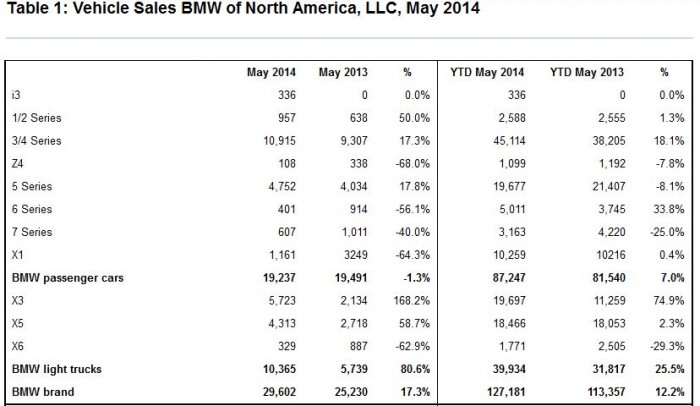The numbers are in and BMW’s sales in the U.S. continued to climb in May. Sales were up 17.3 percent May to May, with 29,602 units sold. For the first five months of 2014, sales are up 12.2 percent.
The overall trend is the same, but some things have changed since I wrote about BMW’s March sales. BMW trucks/SUVs continue to be a huge part of the company’s success, up over 80 percent May to May and 25.5 percent year to year. The X3 is up an astounding 168 percent May to May and 75 percent year to year, without a recent model refresh.
Meanwhile the new (to the U.S.) X1 hatchback has cooled off dramatically since March, down 64 percent May to May compared to being up 55 percent in March. And the 6-Series, which in March looked to be expanding rapidly has also fallen way off, though still up almost 34 percent year to year.
These numbers are strong, but BMW can’t afford to get comfortable. The European car tide also lifted Mercedes and Audi (owned by Volkswagen) in May. Mercedes sales were up 8.8 percent to 28,881 vehicles, and Audi’s were up an impressive 25.5 percent, selling 16,601 vehicles in May led by the popular new A3.
A stat from Kelley Blue Book illustrates how fiercely these three rivals compete in the American market. The average transaction price of the three brands has become much closer over the past few years:
- BMW – $52,104
- Audi – $51,696
- Mercedes – $58,669
- U.S. car market average – $32,307
If you’re currently in the market for a BMW, you might want to use these model-specific numbers and the intense European scrum for buyers to your advantage.

